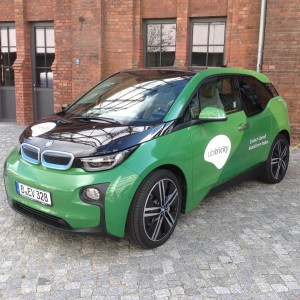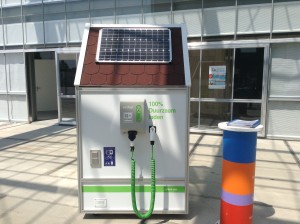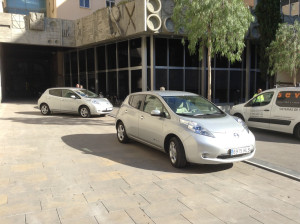 Many of us see a technology transition as simply that, a swapping out of one technology for another one. But, sometimes, a technology transition has much broader impacts and implications. We’ve seen that a bit with computers, especially as they have become more and more efficient and affordable, enabling better education, health services, transportation services, and economic growth in countless corners of the world. On a similar but perhaps even greater level, a transition to solar power and electric cars will transform the world.
Many of us see a technology transition as simply that, a swapping out of one technology for another one. But, sometimes, a technology transition has much broader impacts and implications. We’ve seen that a bit with computers, especially as they have become more and more efficient and affordable, enabling better education, health services, transportation services, and economic growth in countless corners of the world. On a similar but perhaps even greater level, a transition to solar power and electric cars will transform the world.
Energy is a basic need. Transportation is a basic need. Satisfying these needs, however, has resulted in massive wealth inequality. The supermajority send their money to essentially just a handful of super-rich people at the top of oil, coal, natural gas, and utility companies. The centralized nature of the energy industry today results in centralized accumulation of wealth. Non-renewable and non-local fuels require a huge potion of our household budgets. It is a constant, one-way stream of cash leaving our hands, and even the world’s poorest send their minuscule earnings to monopolists in order to burn kerosene for light.
 Solar power, cheaper than fossil fuels in the developing world and much of the developed world, can free billions from the continuous monthly or even more frequent cycle of wealth transfer. This clean form of energy offers not only power for our appliances, lights, and computers, but also social and political power. While the super-rich will lose influence, the poor and middle class will gain freedom and persuasiveness.
Solar power, cheaper than fossil fuels in the developing world and much of the developed world, can free billions from the continuous monthly or even more frequent cycle of wealth transfer. This clean form of energy offers not only power for our appliances, lights, and computers, but also social and political power. While the super-rich will lose influence, the poor and middle class will gain freedom and persuasiveness.
 Electric vehicles bring this transition to another level. Again, we are currently sending trillions of dollars to the super-rich in exchange for fuel that we quickly burn. It is like throwing money down the drain. At the same time, that fuel we burn harms our health and shortens our lives. Electric cars, meanwhile, have zero emissions and can be charged with electricity from low-cost renewable resources such as solar and wind power. They again increase our energy independence and self reliance. The social and political ramifications are broad and considerable.
Electric vehicles bring this transition to another level. Again, we are currently sending trillions of dollars to the super-rich in exchange for fuel that we quickly burn. It is like throwing money down the drain. At the same time, that fuel we burn harms our health and shortens our lives. Electric cars, meanwhile, have zero emissions and can be charged with electricity from low-cost renewable resources such as solar and wind power. They again increase our energy independence and self reliance. The social and political ramifications are broad and considerable.
It may take decades for this transition to play out. We may only slowly see how it changes our lives and our world, but one day, we will be able to look back and put the puzzle together quite clearly.